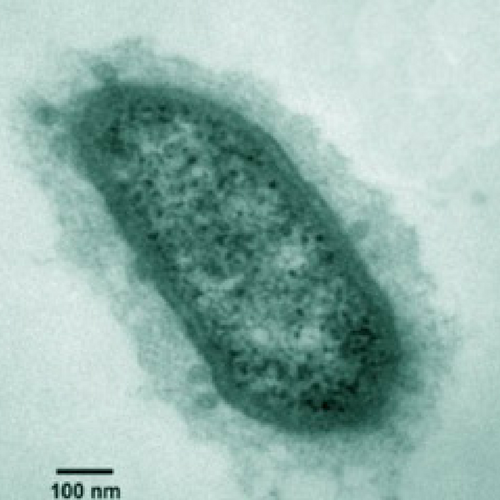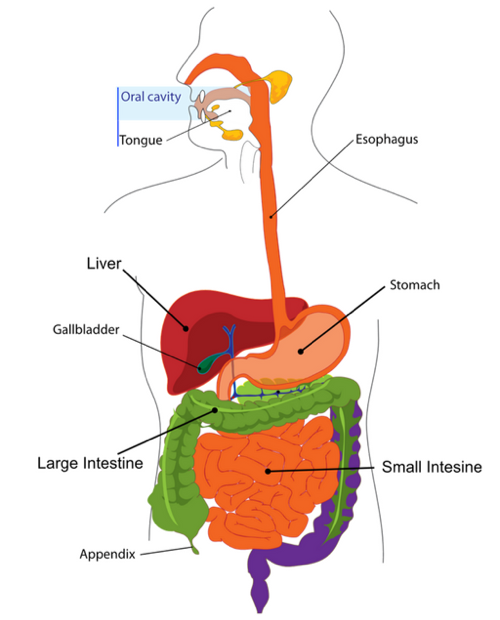Methanogens: The Bloating Root Cause You Haven’t Heard of (and a New Solution for SIBO)


Bloating… that enormous feeling of pressure like someone just blew up your abdomen with an air pump… and now your pants have shrunk two sizes.
Or maybe it’s that feeling of fullness like you’re dragging around an extra tire everywhere you go.
If you’re like millions of other people, you can relate.
For some people, this is an all-day problem that starts the moment they wake up and gradually gets worse throughout the day.
For others, it comes and goes – maybe related to a food trigger, or maybe with no rhyme or reason.
And along with the bloating comes the “C” word… constipation, meaning three or fewer trips to the restroom in a week..
Yet others have the opposite problem – diarrhea that strikes soon after a meal and leaves them scrambling to find the closest bathroom.
When Nothing Works
If you’re struggling with bloating, constipation, and/or diarrhea, you’ve probably tried all the advice…
Your mom’s advice was to eat plenty of fiber and drink more water. (That just made the bloating worse!)
A friend shared that a daily dose of probiotics has now made her “regular.” (Sure probiotics are great, but they didn’t help with the bloating…)
And when you finally decided to ask your doctor, he replied by asking how well you were handling stress and offered you an antidepressant.
While a healthy gut, a diverse microbiome, and learning to better manage stress are all positive changes, if you’re still struggling with severe bloating, they aren’t enough.
Is Bloating Really a Big Deal?
If you’re debating whether bloating is really such a big deal, consider these statistics:
- Abdominal bloating is reported in up to 76% of those suffering from functional gastrointestinal disorders.
- 75% of those who report bloating are visibly distended and/or report their symptoms as severe or moderate.
- 54% of those with bloating report that the symptoms affect their quality of life.
- 43% of those with bloating report taking medications as an attempt to control the symptoms.
- And finally, 60% of those with functional disorders report that bloating is their most bothersome symptom.
Why You’re Still Bloated
So what’s behind this bloating and why is it so impossible to get rid of? The answer may surprise you…
It’s possible your bloating is caused by methane. Yes, we’re talking CH4, otherwise known by chemists as a colorless, odorless, volatile inert gas.
Methane is the main component of the natural gas you might use to power your stove or furnace.
But, humans can also produce methane in their intestines through a process called methanogenesis. And when this occurs, the result can be really uncomfortable gas and bloating.
Methanogenesis depends on the presence of a special type of bacteria in the colon called methanogens.
What Are Methanogens?
Our gut is home to about 100 trillion bacteria, nearly all of which reside in the colon. These bacteria play an important role in both our digestive and overall health. Methanogens are just one type of bacteria that can live in your gut.

Methanogens are primitive single-celled “bugs” from the domain Archaea. And while they are considered an ancient group of organisms, they still thrive today. In fact, archaea are found in every habitat where anaerobic biodegradation of organic compounds occur (yes, we’re talking about poop), including the human and animal intestinal tracts.
Methanogens in humans are limited to three types:
- Methanobrevibacter smithii, which is the dominant methanogen found in the intestine accounting for 94% of the methanogen population
- Methanospaere stadmagnae, also found in the intestine
- Methanobrevibacter oralis, found in the oral cavity
If you have methanogens living in your gut, you’re potentially a “methane-producer.”
In the human population, individuals can be classified as methane producers or non-producers. While some studies estimate that 35% of the Western population is considered methane producers, other studies report that the range may be somewhere between 30-62%.
What Causes Methanogenesis?
So here’s how it works. When we consume a type of carbohydrates called polysaccharides (such as in starches and grains – even gluten-free), the bacteria in the colon help to break down these molecules through a process called anaerobic metabolism resulting in H2 (hydrogen) and CO2 (carbon dioxide).
Next, one of two processes can take place.
The first involves sulfate-reducing bacteria who use the hydrogen to reduce sulfate to sulfide, which are then eliminated in the stool.
The second involves methanogens, through the process of methanogenesis, who feed on the hydrogen to form CH4 (methane) at a 4:1 conversion rate – meaning that for every 4 atoms of hydrogen consumed, one molecule of methane is formed. The methane can then be eliminated through the stool, or it can be absorbed via the circulatory system and exhaled through the breath.
Methanogenesis is not a new concept. For years, this process has been recognized in the agricultural world. Livestock studies that have found ruminant animals (e.g. animals who have stomachs divided into four sections, such as cattle) produce high amounts of methane due to a diet heavy in polysaccharides.
Does It Matter If You’re a Methane Producer?
While it is normal and healthy to have a diverse bacteria in your colon – including the presence of methanogens – if you’re primarily a methane-producer, it can help to explain why you struggle with bloating.
- Methane producers suffer more frequently from bloating than non-producers
- Methane producers also suffer more frequently with abdominal pain and gas
- Methane acts as a paralytic to slow down gastrointestinal transit time
(Specifically, methane slows down small intestine transit time by 59%!)
And if you’re struggling with constipation or maintaining a healthy weight?
- In those reporting constipation, higher amounts of M. smithii have been found
- The amount of M. smithii inversely correlates to stool frequency
- Research studies have proposed that the presence of M. smithii also increases caloric absorption because of its effect on metabolism
- Other studies have suggested that methane-producers have reduced postprandial serotonin levels, which can also affect intestinal transit
Can’t I Just Change My Diet?
Short answer: yes.
The Specific Carbohydrate Diet eliminates harder-to-digest polysaccharides.
Eliminating polysaccharides – alongside eating nourishing foods like bone broth and 24-hour yogurt – can alleviate symptoms and promote healing.
But that’s not the whole problem – here is the longer answer.
When Diet Isn’t Enough
Although bacteria are present throughout the entire digestive system, the majority of bacteria belongs in the colon. For example, the typical stomach is host to 101 to 103 colony-forming units per aspirate, whereas the colon is host to 1011 to 1012 colony-forming units per stool.
Between the stomach and colon lies the small intestine, which normally should contain only trace amounts of bacteria and therefore has been described as “relatively sterile.”

However, we now realize that it is possible for increased numbers of bacteria to build up in the small intestine, resulting in a condition called Small Intestine Bacterial Overgrowth, or SIBO.
This is where the issue lies: an overgrowth of methanogens in the small intestine.
The small intestine is where those pesky methane bugs can really wreak havoc on your digestive system.
What Causes SIBO?
But how does this bacteria end up in the small intestine if it’s not meant to be there in the first place?
Researchers believe that any type of “shock” to your digestive system – such as stress, being sick, food poisoning, or taking antibiotics – can result in bacteria growing where it shouldn’t, e.g. the small intestine.
The bacteria overgrowth can cause an excessive amount of both methane and hydrogen production in the small intestine, where it doesn’t belong.
In general, an excess of hydrogen production is associated with diarrhea-dominant SIBO and an excess of methane is associated with constipation-dominant SIBO. And some people have an excess of both gases.
Small intestine bacterial overgrowth has been linked to a growing number of conditions and risk factors. These include just about any condition affecting digestion or the digestive system, along with multiple other systemic conditions including:
- diabetes
- liver disease
- kidney disease
- pancreatitis
- autoimmune disease
- neurological conditions
- traumatic injuries
- catastrophic illnesses, and more.
In fact, it is now recognized that just a single episode of gastroenteritis or food poisoning can trigger small intestine bacterial overgrowth.
How Do I Know If I Have SIBO?
Just as each person’s gut microbiome is entirely unique to them, each case of SIBO is 100% unique to the person who has it. No two cases of SIBO are exactly alike – making it hard to test for accurately, and even harder to treat.
The gold standard for determining the presence of methane in the small intestine – one of two excess gases produced with SIBO – is via an invasive test. A scope is passed via the mouth, through the stomach and into the second half of the small intestine (called the jejunum) where an aspirate is collected and then analyzed.
The threshold for the presence of small intestine bacteria has been considered 105 or greater colony-forming units per gram of jejunal aspirate, although now the consensus is that 103 or higher is clinically significant.
Unfortunately, the reality is that such an invasive test is not widely available and so the more common tool to measure small intestine bacteria is via the breath test.
Breath tests work by measuring the levels of hydrogen and methane produced as carbohydrates are digested, as an indirect reflection of the bacteria present in the small intestine.
However, breath tests are not 100% reliable. While methane producers generally exhale between 20-50% of the methane via breath, the exact threshold for measuring methane has been debated. But, methane producers generally have a concentration of 108 or higher of methane per gram of stool.
This means that an absence of methane in the breath does not necessarily mean an absence of methanogenic flora in the small intestine.
On the contrary, varying amounts of methanogens are present in the vast majority of a healthy adult’s gut, almost universally.
To sum it up: even if you’ve had a negative breath test for SIBO, an overgrowth of methanogens in your small intestines could be causing symptoms.
Traditional SIBO Treatments
So how do you get rid of the excess methane in your small intestine so your life can get back to normal?
Well, that’s a tricky problem.
Traditional SIBO treatments work in 1 of 2 ways:
- Starve the bacterial overgrowth, so symptoms subside
- Try to obliterate the overgrowth with antibiotics
If you have a positive breath test for either methane or hydrogen, your doctor might suggest a couple of antibiotics – Rifaximin and Neomycin – which are poorly absorbed systemically and therefore work primarily in the lumen of the intestine.
But there’s a catch.
Technically, Rifaximin is only approved for those who have diarrhea-predominant symptoms (which means they’re more likely to have an abundance of hydrogen-producing bacteria). And in those individuals, it only works for about 41% of people. (This means it will likely help even less for those whose problem is constipation.)
Since we know that methane overgrowth is associated primarily with constipation-dominant SIBO, a drug that works primarily for those with diarrhea suggests that Rifaximin isn’t as effective at killing an overgrowth of methanogens.
For reasons that are not fully understood, there does seem to be some benefit to using Rifaximin combined with Neomycin, but even then the efficacy is poor.
These methods both work for some people (it goes back to each case of SIBO being unique) – but they don’t work for everyone.
And since Jordan and I were “Tough Cases” ourselves, we really empathize with these people.
They’re following a really restrictive diet (sometimes even an elemental diet with NO solid food for weeks at a time). They’ve taken powerful, expensive, and potentially dangerous drugs.
And they still aren’t getting better (or they get better for a month or two, only to have their symptoms come back worse than before).
Do We Need a New Way to Treat SIBO?
While SIBO is a relatively new diagnosis, understanding of the process of methanogenesis has existed for decades.
In fact, methanogenesis (and how to reduce it) has already been studied exhaustively in the agricultural world. This is because the production of excessive methane gas by cattle can actually impact the atmosphere.

(This is where things get exciting…)
Because it means there is a time-tested and science-backed way to treat excess methane in the gut caused by SIBO – other than just drastically modifying the diet.
This idea was first explored by Dr. Kenneth Brown – a board-certified gastroenterologist and clinical researcher.
Instead of trying to starve the bacteria out or obliterate them with antibiotics – Dr. Brown wanted to interrupt the process of methanogenesis.
Interrupting Methanogenesis
Using research from agricultural and gastroenterological studies, Dr. Brown identified 3 ingredients that disrupt methanogenesis:
- M. balsamea Wild Extract – Better known as peppermint, this ingredient has long been recognized by natural healers and scientists as a soothing agent to calm down digestive distress. Studies also show that a sustained release in the small intestine can provide rapid relief of abdominal discomfort.
- Quebracho – This type of flavonoid tannin has two functions.The first is to soak up hydrogen (important as methanogenesis depends on hydrogen availability to produce methane). Secondly, it works on the lipid bilayers of bacteria (meaning it weakens the cell wall of the archaea methanogens responsible for methanogenesis).
- Conker Tree – This is another type of flavonoid saponin (also known as horse chestnut). This ingredient acts as an antimicrobial and continues the work of the quebracho by binding the reductase enzyme in the weakened archaea to stop the cycle of methane production. In addition, saponins are also known to promote intestinal motility.
Eventually, Dr. Brown found the ideal ratio and forms of each ingredient and combined it into one supplement – called Atrantil.
A double-blind study was conducted to determine the efficacy of Atrantil. In this study, it was found that Atrantil was 88% effective in reducing the symptoms of bloating, constipation, and abdominal discomfort.
Then, in an open-label retrospective study, patients who had failed at least four other treatment options before trying Atrantil were reviewed. This study found that Atrantil offered an 80% efficacy in relieving these same symptoms even for “Tough Cases.”
So Can I Eat Whatever I Want?
I know what you might be thinking right now – does this mean I don’t need to follow a restricted diet any more even though I have SIBO? I can just take a supplement?
Definitely not.
Finding and following your own customized diet is critical to the success of any supplement.
You can’t “out-supplement” the wrong diet.
If you don’t have your diet dialed in to your needs, no supplement will help.
But for those who already know what foods do and don’t work for you, are working with a great practitioner, have your stress well-managed, and are STILL dealing with SIBO symptoms, take note. This supplement might be something to try.
Is This the Solution to SIBO?
For some people, changing your diet is all you need to feel good again.
Others we’ve worked with have had relief from SIBO after a course of antibiotics or herbal treatments.
More often, though, we hear from people who struggle for years with SIBO symptoms – and nothing works long-term.
Jordan and I are passionate about sharing what works with our community – and after hearing from so many of you about your success with Atrantil, we had to learn more.
Our conclusion? If you can’t get a handle on your SIBO symptoms, you need to give Atrantil a try.
For some people, we’ve seen it give relief of major symptoms in just a few hours.
For the “Tough Cases” we work with, it can take longer to see results – up to a few weeks at the higher dose (two pills up to three times a day). You might also experience some die-off symptoms – but this is actually a good sign as it means the methane cycle is being disrupted. Staying well-hydrated and getting plenty of rest can help during this time.
We are dedicated to only sharing the best supplements with you – and we’re excited to add Atrantil to the list of supplements we believe really help people.
You can try it out here. (And if you use the code “SCD” you’ll also receive 15% off).
Leave a comment and tell us – have you tried Atrantil? What were your results?
-Steve
Did You Like this Article?
Subscribe to our newsletter to receive email notifications, some ways to find relief, and next steps.
